Zero waste gardening – 7 innovative ideas to make your garden greener
Reduce your impact on climate change by gardening in a more sustainable way and not wasting anything
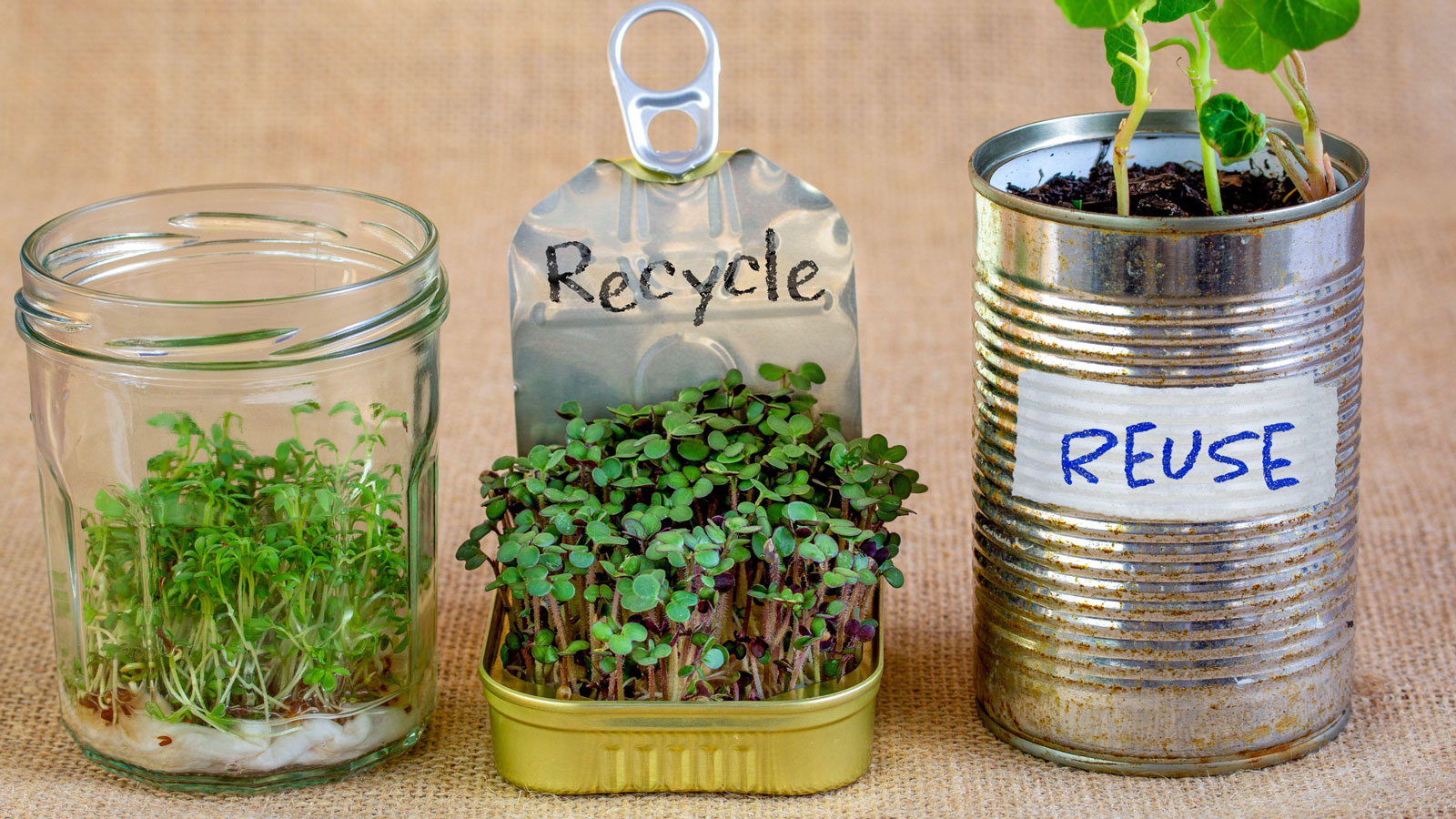

Zero waste gardening is about minimising inputs to your garden and maximising outputs by using everything. This means doing things like harnessing sunlight, capturing rainwater and using every part of a plant to make the most of natural assets in your growing space.
It also means creating healthy soil, making your own fertiliser instead of buying it, and composting kitchen waste, so that nothing is wasted and everything is utilised. Making your own mulch helps retain moisture in soil so can cut down on the amount of water needed for irrigation, as well as prevent weeds flourishing so you don't have to resort to chemicals. Make your motto 'waste nothing and save everything', and you will soon be on your way to achieving zero waste gardening.
When we use sustainable ideas to create an eco-friendly garden we help the environment by keeping items out of landfill for longer too. We have gathered expert advice to find out what you need to do to achieve the ultimate goal of zero waste gardening.
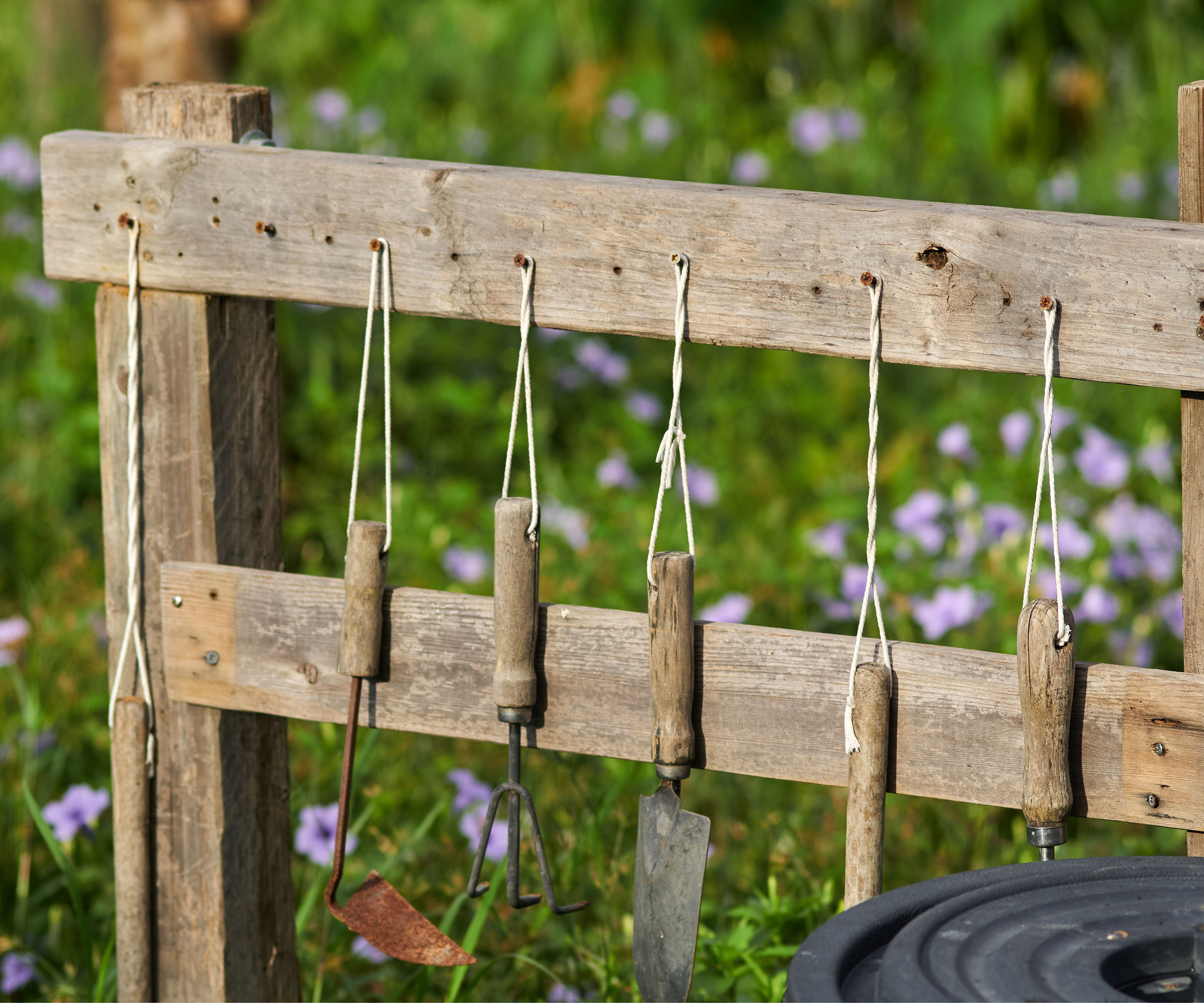
7 ideas to help you work towards zero waste gardening
'We often think about gardening being a 'green' activity but it can actually generate a lot of waste,' says Katie Elzer-Peters, horticulturalist and author of No-Waste Kitchen Gardening, available from Amazon. 'For example, new plants in plastic containers, commercial mulch, and fertilizers are all sources of waste.'
But don't despair; there are clever ways to reduce waste by reusing and recycling, thinking twice before throwing stuff away, and welcoming other green and organic ideas to create a low-cost and low-input garden.

Katie earned a Bachelor of Science in Public Horticulture from Purdue University and a Master of Science in Public Garden Management from the Longwood Graduate Program at Longwood Gardens and the University of Delaware. After completing her studies, Katie worked as a horticulturalist, head of gardens, educational programs director and manager of botanical gardens around the United States. Katie lives and gardens in the coastal city of Wilmington, North Carolina where she owns Garden of Words LLC, a marketing and PR firm specializing in garden industry clients.
1. Make use of every available space with layered vegetable growing
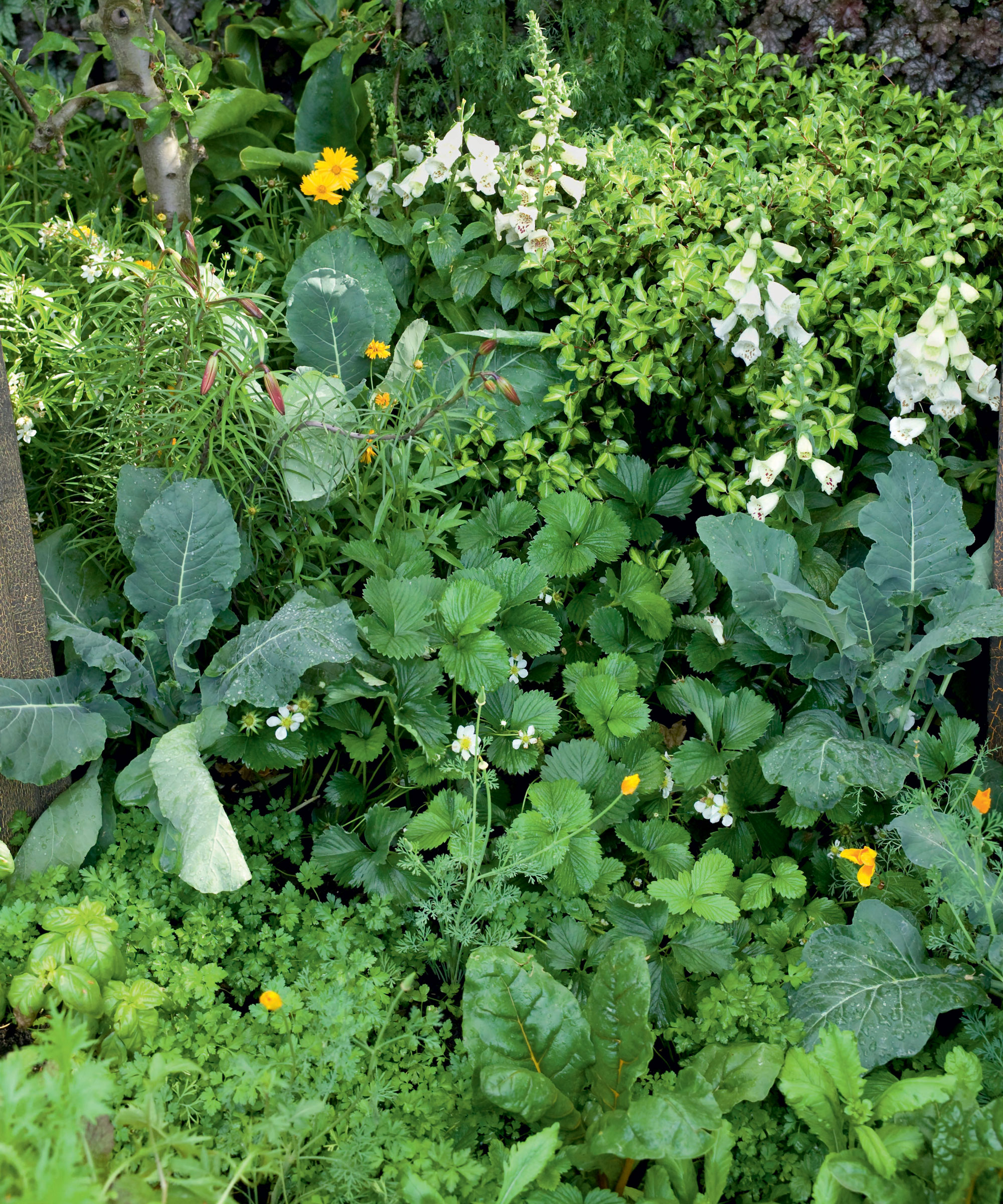
A layered vegetable garden with broccoli, chard, strawberries and chervil
Growing space is often limited, particularly in urban areas, so planning is key when it comes to organizing your vegetable garden. Growing vertically by layering up plants such as in forest garden ideas, where interplanting and under-sowing helps to maximise crops, means that you will end up with more growing space. It also saves water.
It's a good idea to use succession planting methods and grow cold season edibles to make sure your garden is as productive as possible all year round, not just during the summer months.
Use crop rotation methods too as this will benefit both your vegetable crops and boost the nutrients in your garden soil, as well as helping to keep pests and diseases at bay naturally.
2. Feed your soil from what you already have
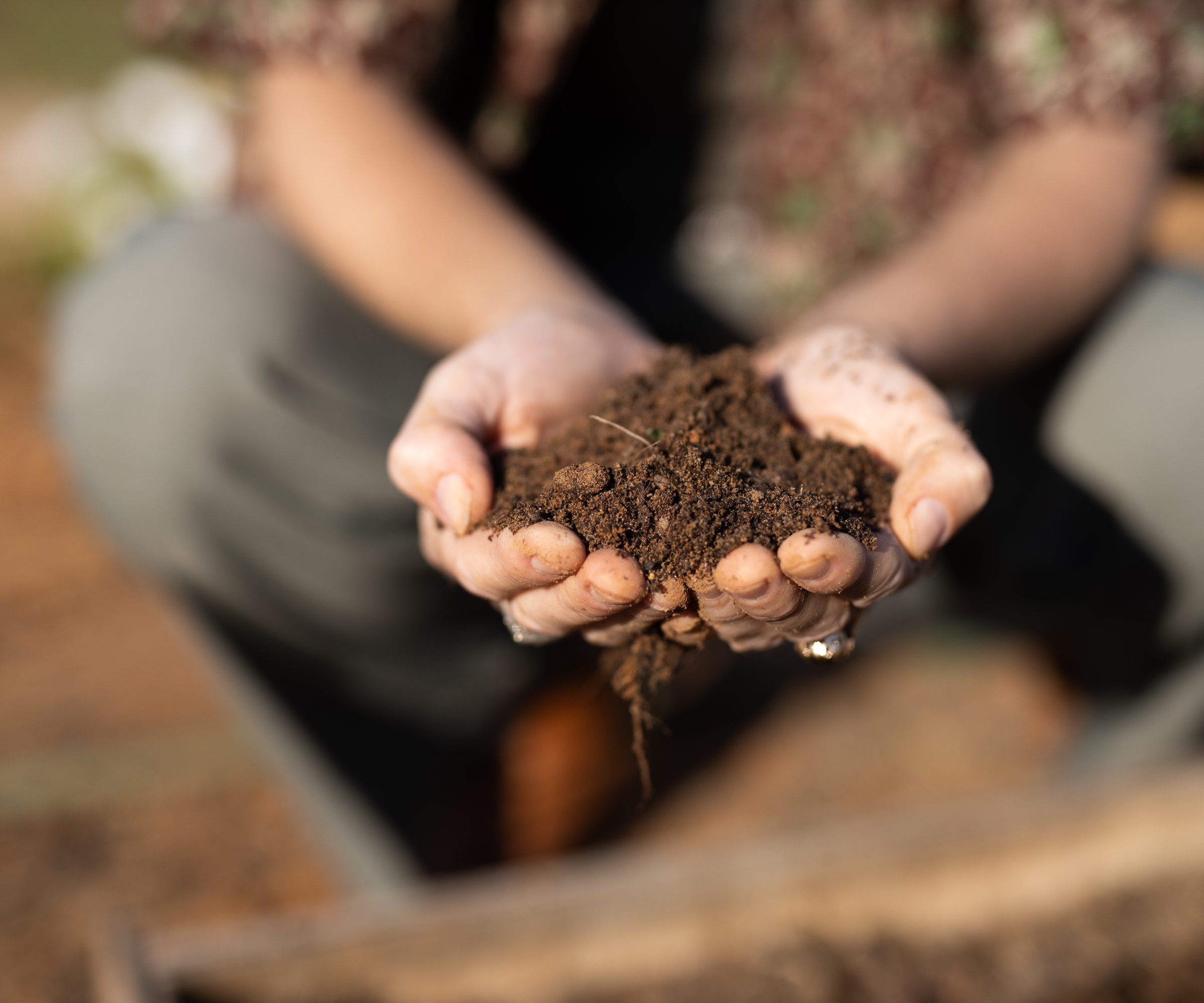
It's best to leave soil undisturbed so nature can do its thing
Every time you dig your garden soil you damage the structure and release carbon into the air, as well as disturbing beneficial fungal networks and earthworm activity. Reducing soil cultivation through no-dig gardening preserves and improves the soil structure, greatly improving its overall health. This is why zero waste gardeners adopt a no dig or 'no till' policy.
'Sometimes the best way to improve something is to let it be,' says green lifestyle advocate Shawna Coronado, author of No-waste Organic Gardening: Eco-friendly Solutions to Improve any Garden, available from Amazon. 'A no-till garden is a perfect example, and creating one also means you have a place to recycle leftover yard and kitchen waste that might otherwise end up in the trash. The excellent soil structure in a no-till bed is formed by these materials composting in place.'
Adopting this approach also means you boost soil nutrients using sustainable practices instead of relying on synthetic fertilisers. Turning soil kills the microbes living beneath the ground that contribute to a healthier root system by living symbiotically with plant roots. Undisturbed, enriched soil requires far less fertilizer, which means minimizing inputs to your yard and less reliance on manufactured products.
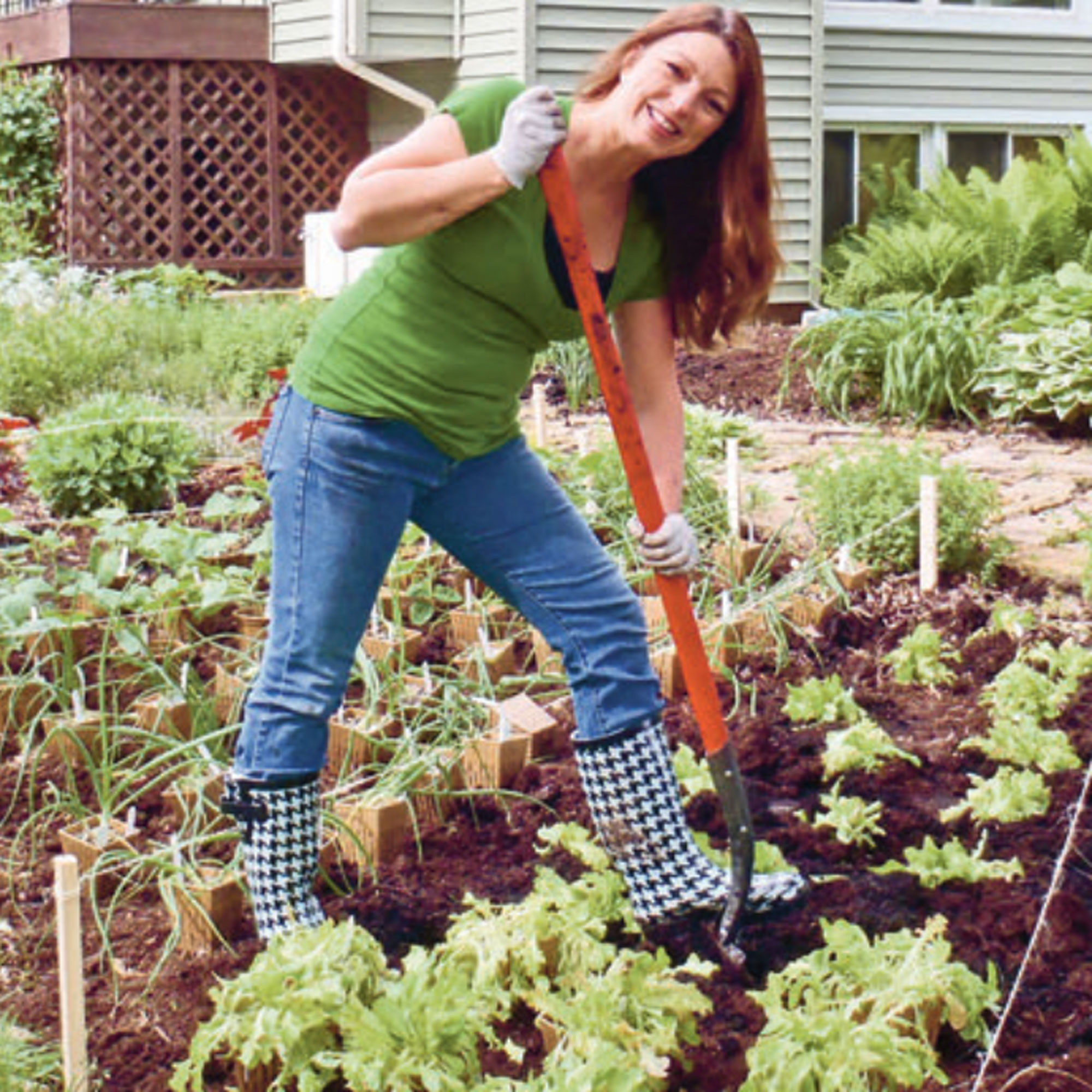
Shawna lives in Arizona, in the American Southwest. As an author, photographer, and media host, Shawna campaigns globally for social good and health awareness. With a “make a difference” focus on sustainable home living, organic gardening, and healthy food recipes built to inspire, Shawna aims to stimulate positive changes for the community.
3. Make your own compost
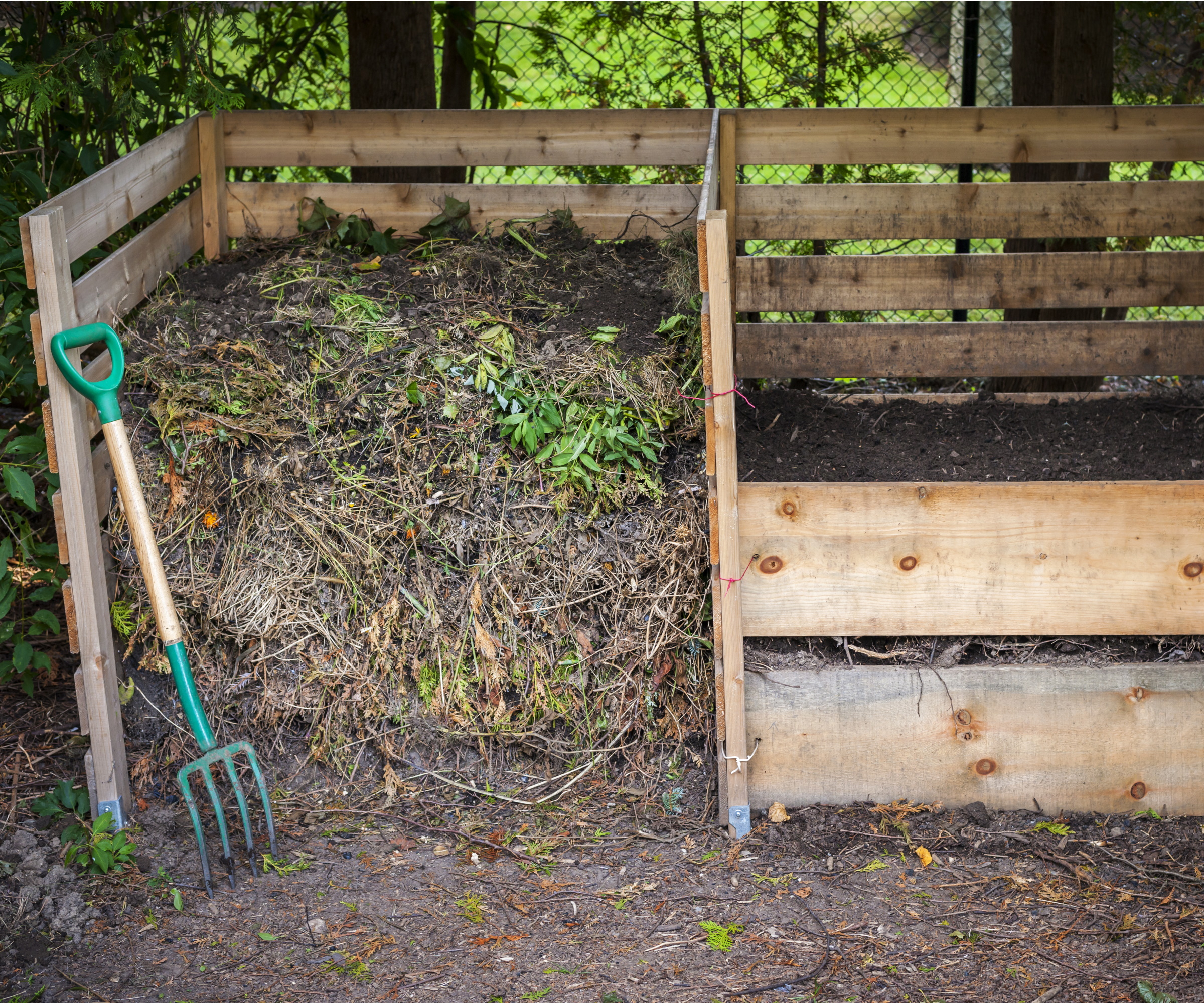
Say goodbye to plastic bags of compost and make your own
Look into making your own compost as an important step to help you grow your own organic herbs, vegetables, and fruit while at the same time adopting zero waste gardening practices. Plus in the process, you can feed yourself and your family with fresh, organic, chemical-free food grown in nutrient-rich soil.
'Amending your own garden soil is not as hard as it sounds,' says Katie Elzer-Peters. 'All you need is some amazingly rich, composted, all-natural manure to toss in your garden beds. Find a nearby farm where you can get manure, rather than purchasing it in plastic bags.'
Manure is garden gold, yet it’s considered a waste material. 'Layering the composted manure and other organic materials on your garden eventually transforms your soil into a wonderland of healthy microbes that feed your plants,’ says Katie.
You can also plant your own green manures to fertilize soil naturally and use kitchen waste in the garden to further enrich your soil.
4. Harness solar power
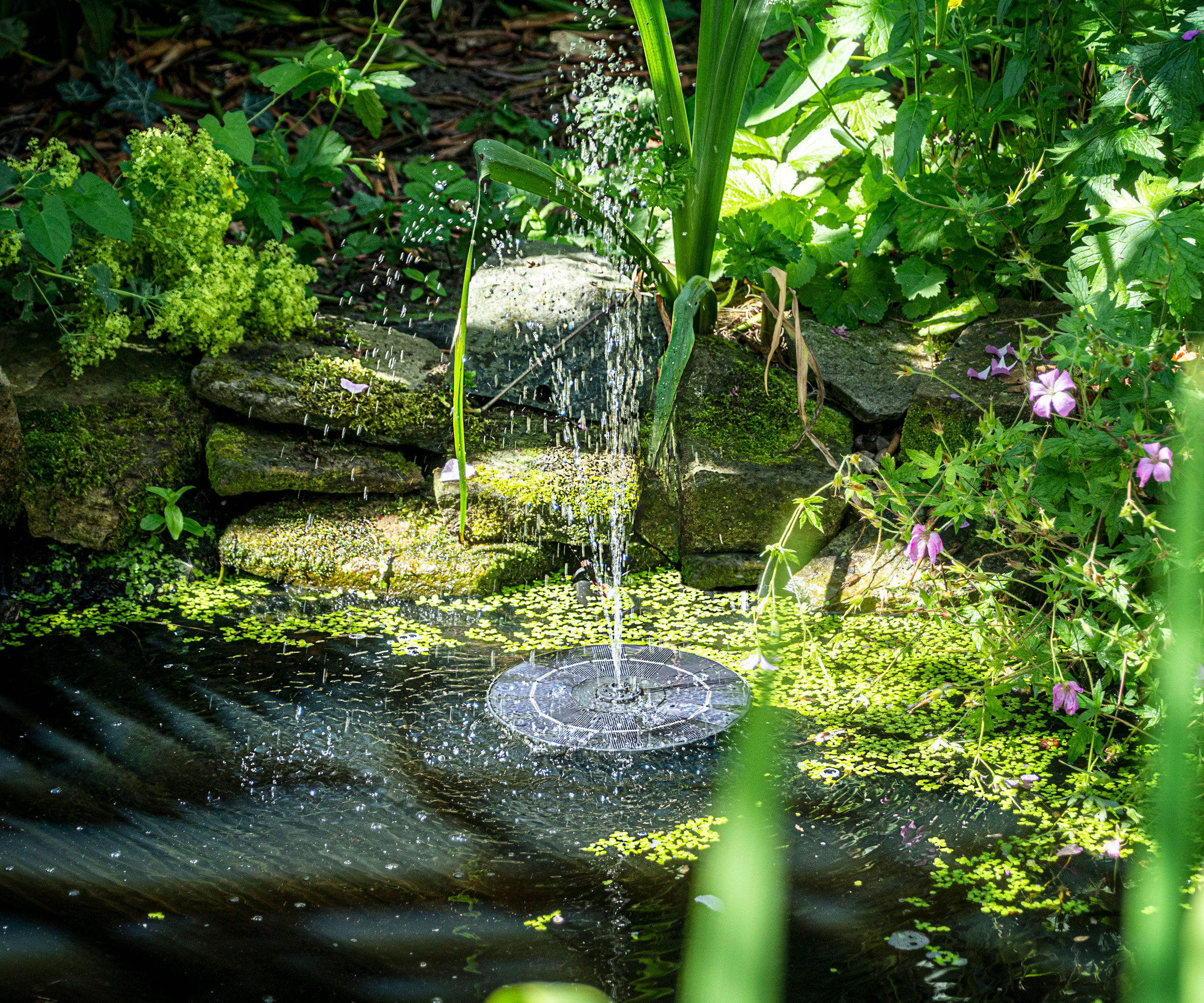
A solar power pond fountain
One way to create sustainable energy and reduce your dependency on fossil fuels is to consider using solar power. This will have a big impact in the fight against climate change as it's clean and renewable. It will save you money too, as well as helping you fulfil your goal of zero waste gardening.
Solar energy is created when radiant light and heat from the sun are harnessed using the latest technology. It can be used for solar lighting the garden, and to power irrigation timers, electric tools and equipment, and water features.
The good news is solar panels are eligible for tax deductions at state and federal level, dependent on your location and the size of your system. Check out the homeowners guide to going solar from the US Department of Energy's Office of Energy Efficiency & Renewable Energy.
5. Collect precious rainwater for irrigating plants
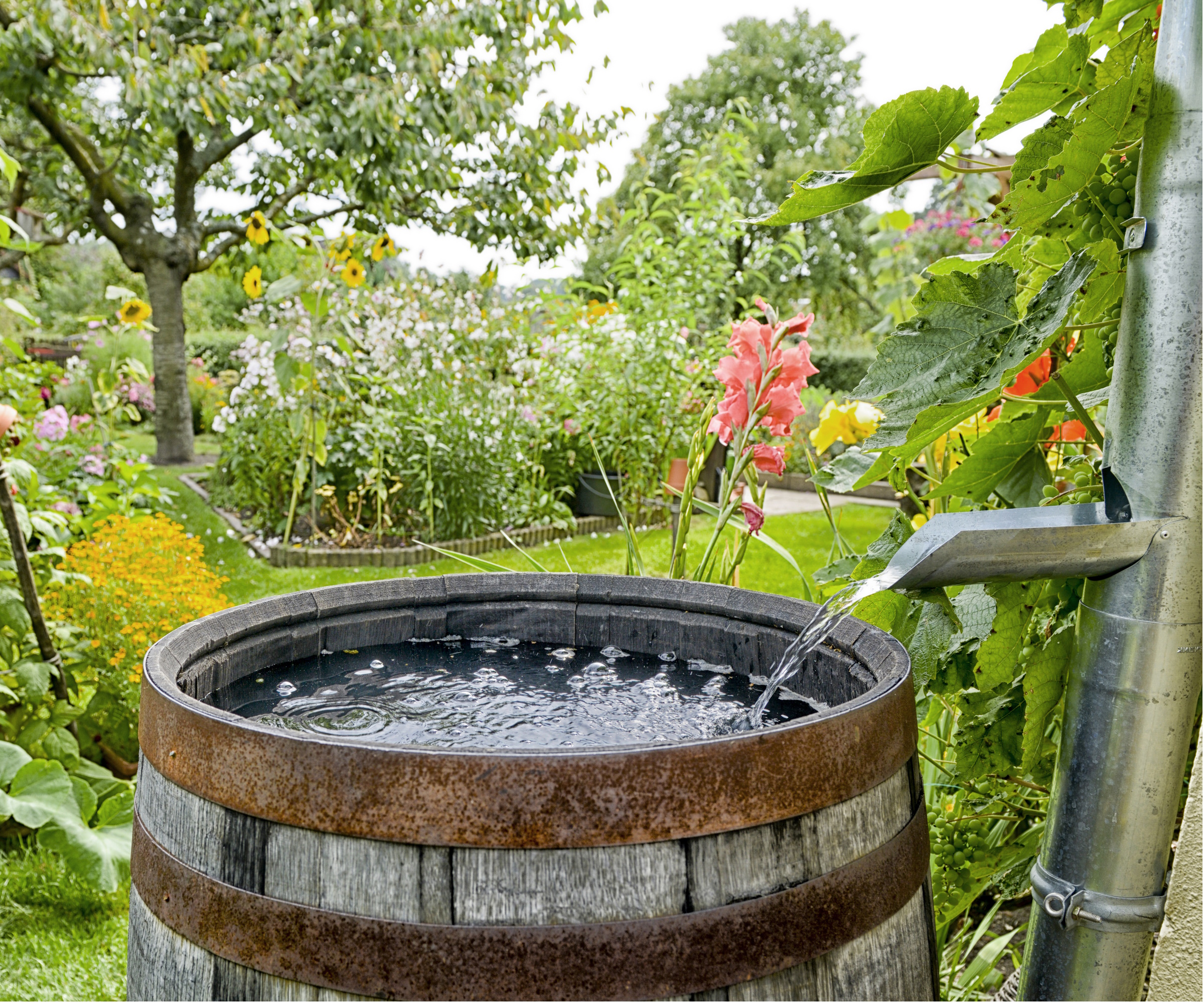
Make the most of free resources such as rainwater
To take advantage of free rainwater, install a system with one or more store-bought rain barrels, or create your own rain barrel by converting a trash can or two.
'Rainwater harvesting is very important to you and your community,' says Shawna Coronado. 'Collecting rainwater for use in your garden means you don’t have to purchase that water. Also, it costs millions of dollars of taxpayer money to maintain and repair public storm water and sewer systems.'
By collecting your own water and withholding it from storm water systems, you save yourself and the community money. Over time, it is possible to collect thousands of useable gallons of water for free from your rooftop.
It's better for plants too. If they're watered with rainwater they're not exposed to the chlorine and other chemicals added to tap water. Try installing a rain chain too, another solution for sustainable watering.
6. Use gray water in the garden too
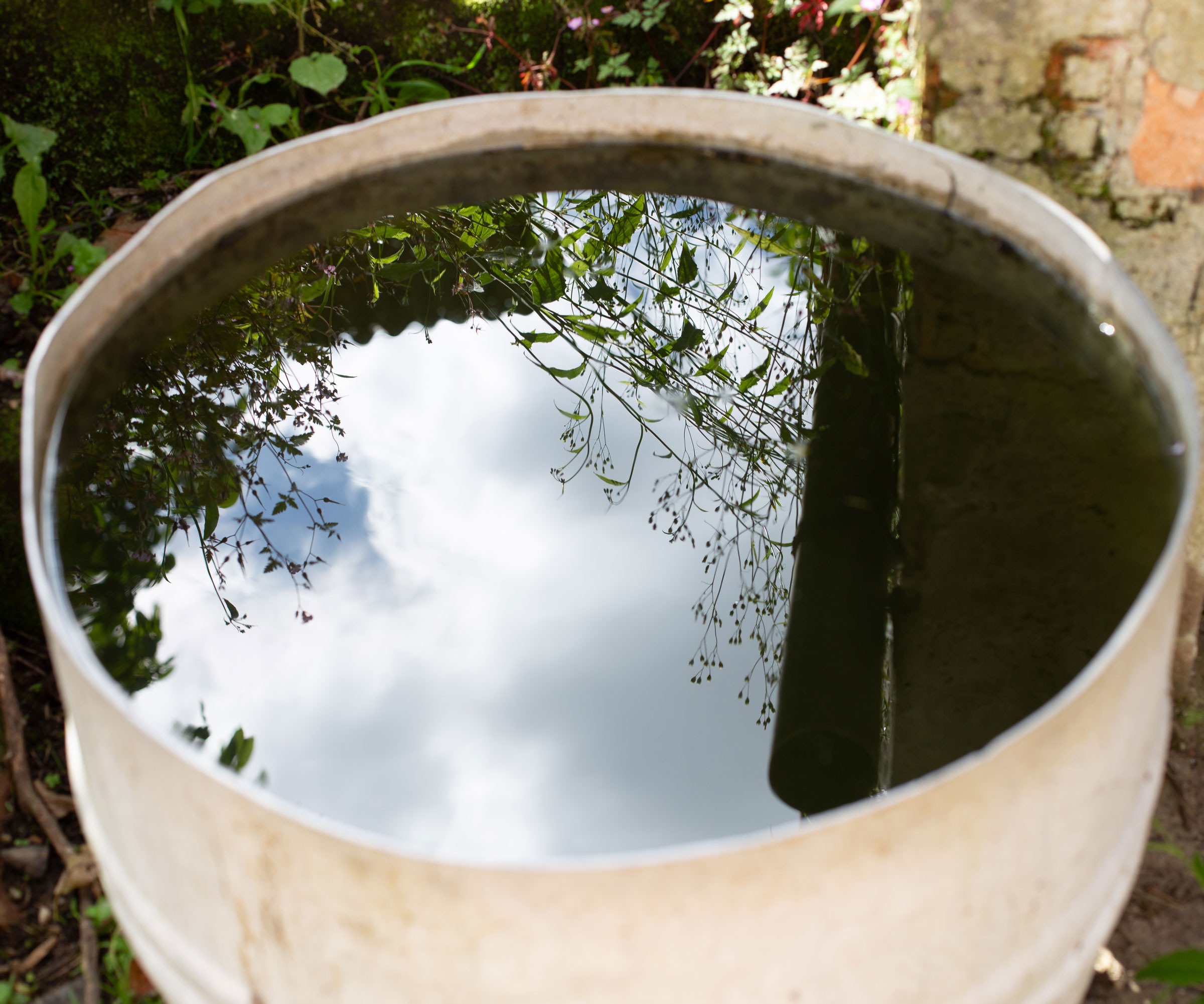
Collect graywater from the shower in tubs or buckets
Finding creative ways to reuse water and reduce water waste in your yard is great for zero waste gardening as it means you're fully utilizing a vital resource and doing your part for the environment.
'Throwing out your cooking water without recycling it is also wasting an opportunity as you lose a nutritional supplement for plants,' says Shawna Coronado. 'Depending on what you're cooking, nutrients leach into the cooking water. Greens such as spinach or chard will produce iron-enhanced water. Potatoes and pasta starches are also good for your garden, but do not use salted water.'
The same idea can work with dishwater if you use an all-natural, non-oil-based soap, and bath water and shower water if you use natural, chemical-free body care products. Simply collect in bowls or buckets to use where your plants most need it.
7. Keep all your garden clippings instead of sending them away
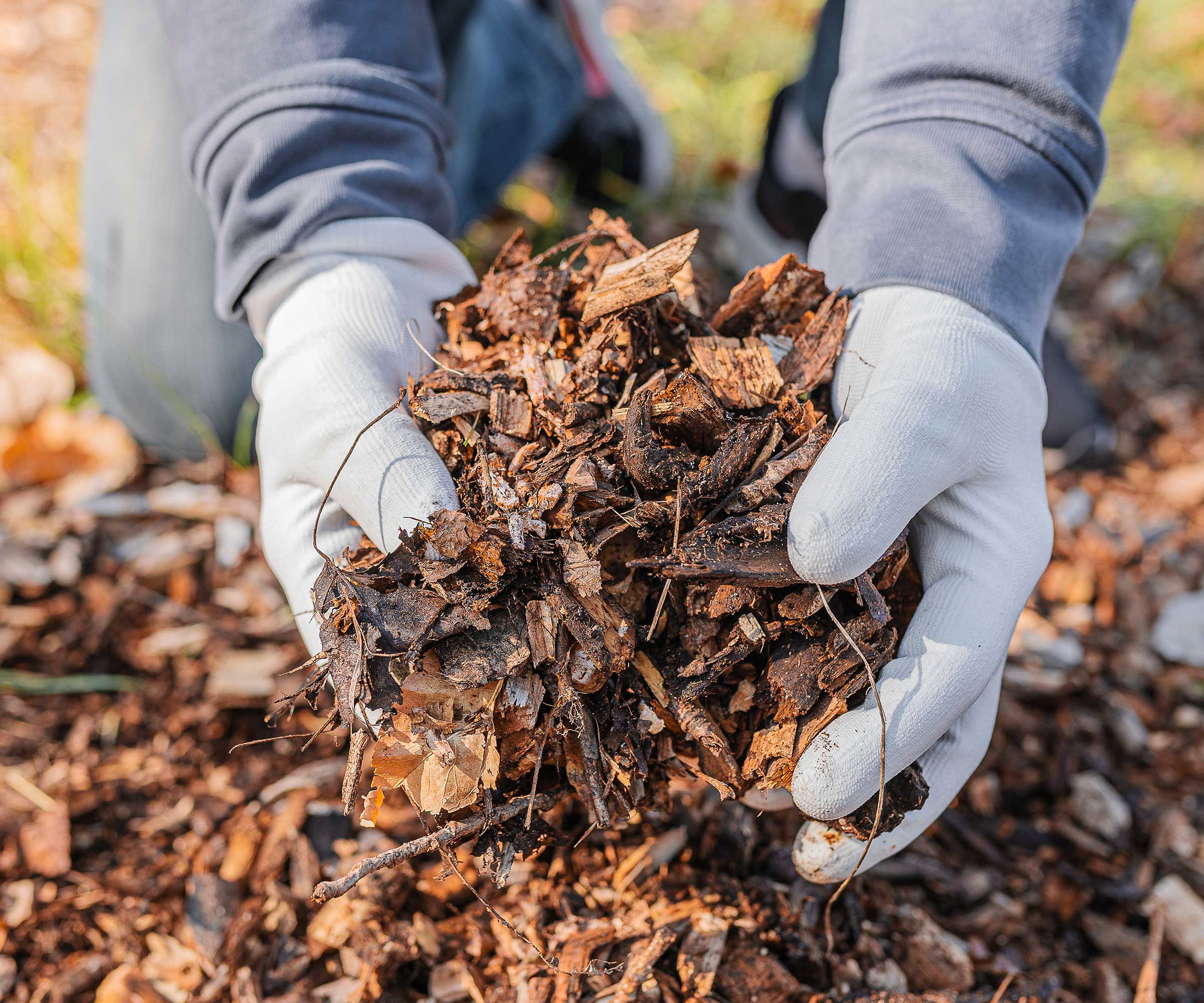
Homemade mulch is free!
'The first place to start with zero waste gardening is to reuse all of the biomass (yard clippings) produced in your yard,' says Katie Elzer-Peters. 'From twigs to weeds to clippings to last season's annuals, your yard produces a lot of organic material. Instead of sending it away, chip it up to use as mulch, or build a compost pile and use it to improve your soil.'
Incorporate mulching ideas into your garden wherever possible, as this is a good way to improve plant health, keep weeds under control, and lock moisture into the soil to cut down on watering. It's also a good way of 'finishing' flower and vegetable beds, and keeps them looking smart.
Check out more expert composting tips too and you'll soon become self-sufficient at producing your own from all the stuff that would normally be disposed of.
FAQs
What can I grow from kitchen scraps to help with zero waste gardening?
Saving your cut vegetable scraps to grow your own plants is a great zero waste gardening idea.
Katie Elzer-Peters, horticulturalist and author of No-Waste Kitchen Gardening, suggests regrowing celery, bok choy and cabbage. 'These vegetables are easiest to regrow, especially when they have been harvested so that the bottom part of their stems stay together and have a bit of root structure remaining.'
Once you have chopped off the celery stems or the leafy greens, set the remaining base of the vegetable in a bit of water, leaving the top open to the air. 'Refresh the water in the container several times per week,' adds Katie. 'Once healthy tops start to grow on the plant, place the new plant base in organic soil, water regularly, and wait for it to grow. If needed, transfer it to the garden or a container once it reaches a larger size. Cut the entire plant once it reaches mature size in 60 to 90 days or more.'
Some more easy vegetables to grow from scraps are lettuce, onions and Brussels sprouts. You can also try growing carrots from carrot tops.
You might be keen to discover more about the concept of permaculture gardening and try easy permaculture gardening projects to help you on your way with your zero waste gardening targets. The idea with permaculture is to copy nature so that you can garden organically, encourage wildlife and have a low-maintenance yard.
Sign up to the Homes & Gardens newsletter
Design expertise in your inbox – from inspiring decorating ideas and beautiful celebrity homes to practical gardening advice and shopping round-ups.
Lifestyle journalist Sarah Wilson writes about flowers, plants, garden design and gardening trends for Homes & Gardens. She has studied introductory garden and landscape design and floristry, and also has an RHS Level 2 qualification in the Principles of Plant Growth and Development. She is a regular contributor to Homes & Gardens and Livingetc. She has also written for Real Homes, Modern Gardens and Country Homes & Interiors magazines.
-
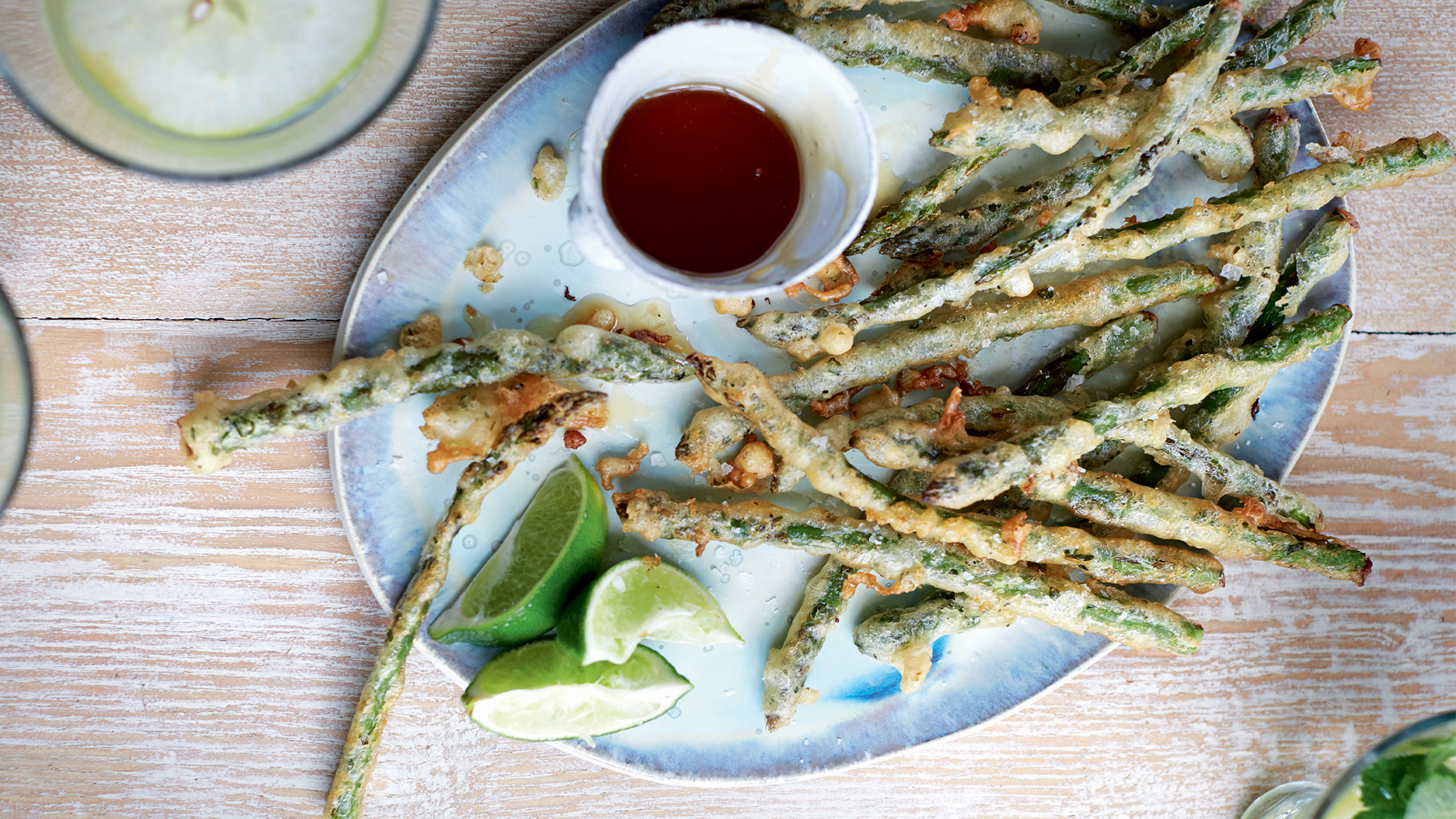 Crispy asparagus with honey
Crispy asparagus with honeyLight golden batter flavored with tarragon, lemon, and coriander makes this asparagus appetizer beautifully irresistible. The perfect spring hors d'oeuvre
By Alice Hart
-
 Lamb leg stuffed with horta and feta
Lamb leg stuffed with horta and fetaThis stuffed leg of lamb with greens and feta is a fresh take on a classic roast, perfect for Easter lunch with friends or family
By Alice Hart